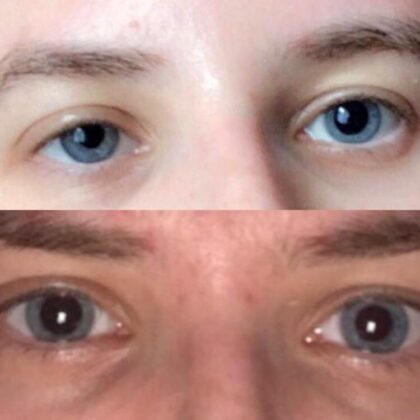

Pupils constrict and dilate through muscles in your eye that are located in the iris. Their function is to let light in and direct that light to your retina, which are the nerves at the back of your eye, allowing you to see. Pupils shrink (constrict) and grow (dilate) in response to varying light levels. Pupils are the black circle in the center of your eye. These situations are ones that a lot of us are familiar with, but what about other instances that cause dilated pupils?ĭid you know that certain drugs can cause dilated pupils? In today’s blog, we’ll explore why pupils dilate, what substances cause dilated pupils, potential risk factors of dilated pupils, and managing dilated pupils.

After a few moments in the parking lot, your eyes soon adjust and you don’t feel as blinded anymore. That’s because when you’re sitting in a dark theater, your pupils dilate, but the sudden move from a dark theater to a sunny area is faster than your eyes adjust. Similarly, when you walk out of a dark theater into a sunny parking lot, you might feel blinded by too much light. However, when you give your eyes time to adjust, the pupils dilate (expand) to take in more light and you can see. When you walk into a dark room after being in a light-filled room, it can be difficult to see. In regular lighting your eyes also adjust. By opening up your pupils, eye doctors can take a better look at your eyes and examine them more closely for any abnormalities. You might also recall your most recent visit to the eye doctor where your doctor put some special eye drops in your eyes to dilate your pupils. Cerebrospinal fluid studies ( lumbar puncture)ĭepending on the diagnosis, medications may be prescribed including cortisone (to diminish swelling of the brain tissue), anticonvulsant drugs (to control seizures), pain relievers, antibiotics (for bacterial meningitis), or anticancer drugs.Most people are usually familiar with what dilated pupils are, and chances are you are as well! When you were younger you might have shone a flashlight into one of your eyes and watched your pupil shrink before moving the light away and watching it dilate again.Blood studies such as CBC and blood differential.The physical examination will include a neurological examination.ĭiagnostic tests that may be performed include: Are the eyes light-sensitive ( photophobia)?.Medical history questions documenting differing pupil size in detail may include:

The medical history will be obtained and a physical examination performed. If you have differing pupil size after an eye or head injury, get medical help immediately.Īlways seek immediate medical attention if differing pupil size occurs along with: The new development of different sized pupils may be a sign of a very serious condition. You should see a doctor if you have persistent, unexplained, or sudden changes in pupil size.

You should see a doctor if you have sudden changes in pupil size. Treatment depends on the cause unequal pupil size. Tumor in the chest or lymph node pressure that may be accompanied by decreased sweating, a small pupil, or drooping eyelid all on the affected side.Excess pressure in one eye caused by glaucoma.Infection of membranes around the brain caused by meningitis or encephalitis.Bleeding inside the skull caused by head injury.Other causes of unequal pupil sizes may include: Other medicines that get in the eyes, including medicine from asthma inhalers, can change pupil size. The use of eyedrops are a common cause of a harmless change in pupil size. Unequal pupil sizes that develop later in life and persist are often a sign of a brain, blood vessel, or nerve disease. If there are no other symptoms and if the pupils return to normal, then the temporary condition is nothing to worry about. If other family members also have this condition, then pupil size is possibly genetic and is nothing to worry about.Īt times, for unknown reasons, pupils may differ in size. Occasionally, a baby is born with different sized pupils and there is no underlying disorder. The pupil is the black part in the center of the eye through which light passes.Įnlargement of one pupil Pupils of different size Eyes/pupils different size


 0 kommentar(er)
0 kommentar(er)
